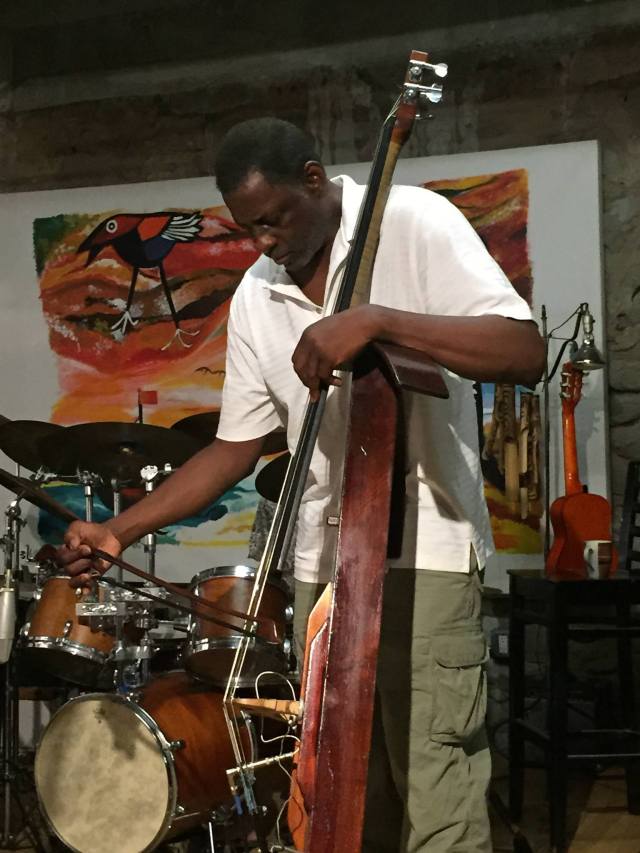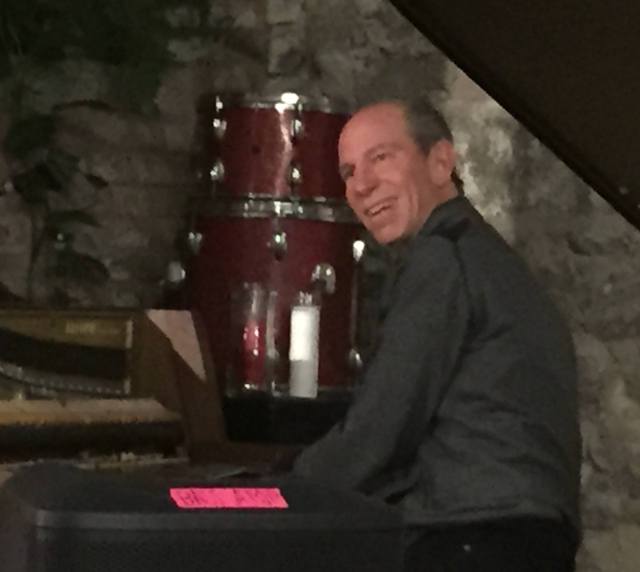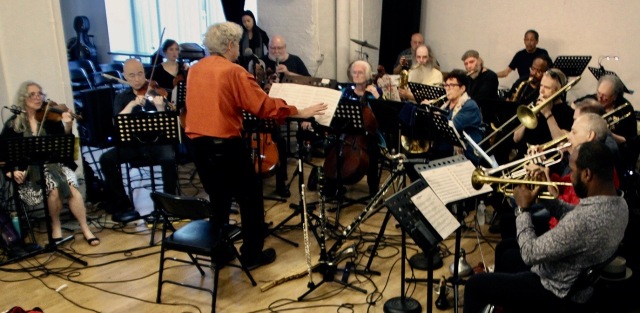there is that period of time stretching from the moment of death to reincarnation.
we lie / stand / breathe / hold our breaths / while waiting / the old ones / the new ones / the barely born > we shudder as shutters are removed > it begins with a suddenness like a QUAKE then romps merrily into simplicity / classical solos & head(s) lilting loping a non-frag-mental journey of intervals into playful decisive solos that erupt instantly ferociously without warning >
StartFragment EndFragment > ERG (one unit of applied energy) > there is no shortage of ERGs or urges in this music & one of Michael Moss’ goals is to not just theorize but to figure out how to apply that applied energy… within & without restrictions… bound by yet beyond CATEGORIES & BOUNDARIES…in a sense creating a new category of categories.
there is commerce & then there is commencement > where composer/pianist Moss’ journey begins & ends yet doesn’t > there is sudden abruptness / sweet finicky melodic fiddling / but one thing there isn’t > accidents > there are no accidents > oh possibly a mishap here or there > or a well planned accidental collision as things increase / decrease & coalesce / swing from one tempo to the next / at times like “thunderbolts connecting heaven to earth” (as real as they are symbolic) &/or vice verse-a within the freedom of expression that so binds the Accidental Orchestra together \ no blindfolds / heaps of classic servings of jazz all cooking together to form a stew of extremes / tastes varying yet always complimenting / all forms / small slices of kitsch blending with huge portions of irony & seriousness \ a BRIDGE toward the TREE OF LIFE > spanning centuries / moments / seconds / near fatal fates coupled with THE STREAMING MIND OF (a) GOD which may or may not exist / consume / exume \ angels devils wizards they are all here > merry > at times dark tricksters & what Moss refers to as DEATHEATERS – from its very inception we are pulled into a world | perceptions conceived / formulations > dark entities always made lighter by the precarious yet sure footed approach to SOUND > here is prime territory / prime real estate / prime cuts / primal instincts / scored / untethered / unadulterated (un)harmonious \ tabla-d and tabled like time inside outside of itself \ like gourmet magic dragons tailing fires / that never drag on } vintage symbiotic symbols / music not called in farmed out or for rent > revealing the prospects of its own vitalized future > heated impassioned intelligent witty / MOVING / never catering to tastes though ever so tasteful / the good life intertwined with heartache and imminent possibilities of our impossible yet inevitable ends / dancing along until theory itself is refueled then runs out of STEAM / a g(h)as(t) or a gasp / where theory itself runs smack into reality i.e. the emotional subtext & texture of BEING / upheaval thru controlled filtering \ cycles of birth & rebirth / a world of (im)precise ever changing voicings toppling upon itself as quickly as it reforms (A CIRCLE constantly consuming itself in its own infiniteness) > OVERDRIVE of the other whirld > dissonant /assonant / accented alternating registers / syntactical structures < instilling grateful foremost mechanism / magnetism / over time sh(r)edding itself then re-organ(ic)izing… beyond labels > what MOSS’ goal as composer/ /author of his own life’s work symbolizes / to promote his ideas with as little hindrance as possible yet to allow for the individual artists to always shine through > how things fit & work & sometimes don’t work within this puzzle / finding musicians who are top notch who like to work together to remain individual while creating the WHOLE > it’s not so much about complications within the compositional framework but straight ahead rhythms that repeatedly find their way inside the sections / tri-tones – way of making sounds that do not resolve…or for that matter dissolve… what delineates the past leads toward the future toward death & to what happens afterward if you happen to be lucky enough to reach that THROWN OF GOLD… where things might be rosy / foggy / GO(l)D-like yet where NO THING is ever quite RESOLVED… where hope & less than hope is always kept alive where the question is the answer… where “don’t hold your breath” means breathe a bit more > there is a renaissance coming whether we see it or not there is always minute second-by-corpuscular second renewal where the Moss writes his ideas within this seemingly unsafe sanctuary of the resolute idea of NO RESOLVE…where illness & rejuvenation are always at odds where music is the healing force hinting always at “intuition & creativity”… “a sense of urgency”…“fluctuating colors shades textures”…”shifting mirrors of distorted reality…pre-psychological mythical tradition… mysterious…foreboding…but ultimately ecstatic… pregnant with possibility… establishing a disturbing atmosphere…” where the music takes you over. where the spirit that is within us & beyond always hovers amongst us. the soul. heroic. quantum. contrapuntal. inspiring. unconscious. where one should take chances but never leap before one looks…never fail to see where one is walking / MOVING \ venturing into … tho contradicting myself as i so often do… LEAPS OF FAITH can oft result in amazing results… as MOSS & the ACCIDENTAL ORCHESTRA more often than not have proven…tripping over a curb can definitely have its rewards. So “challenge your ears…” get into “an arc of melody”… (a kind of Noah’s ARK)…venture into the music & therefore into “…another state” of BEING.
dalachinsky nyc 2017












